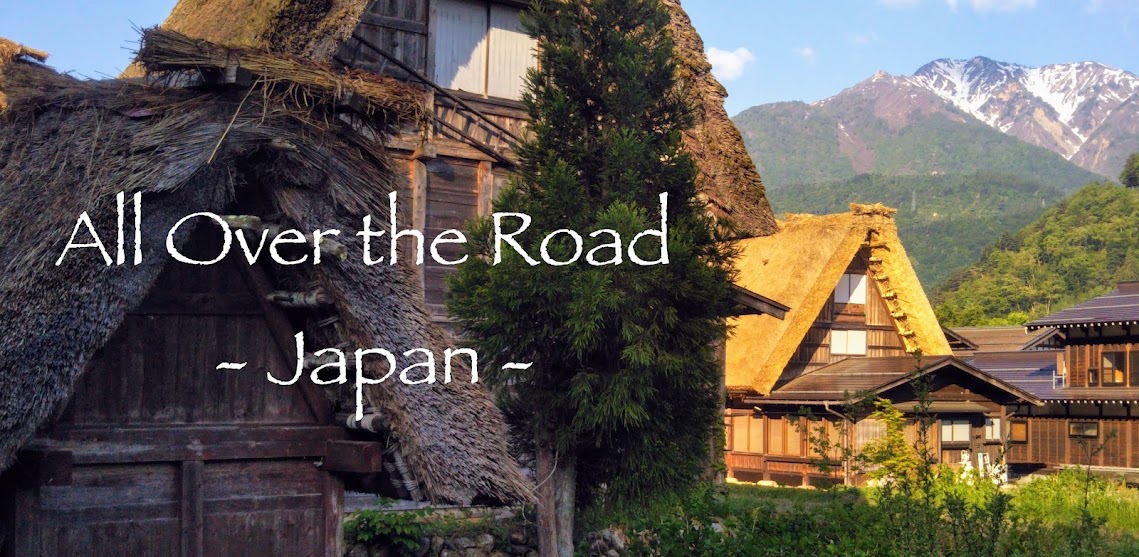How I Got Here
Years ago I landed a writing gig with the Japan Tourism Agency. This was right up my alley as it involved a paid weekend of travel. But there was a catch. JTA wasn't going to let me bullshit the 20 million foreign visitors they were expecting to soon attract annually. I had to write stuff that was factually accurate and free of sarcasm.
There's a first time for everything I guess.
The job involved learning and writing about the centuries of history and tradition in northern Nagano: of shrines and temples; of castles and samurai; of soba noodles and hot springs and things made of bamboo.
Cool, I'm in. I've always enjoyed visiting Buddhist temples and Shinto shrines. I love soba, both hot and cold. After a day of hiking or cycling it's hard to beat a dip in a hot spring. As for bamboo, I simply like saying the word. Bamboo. Bam-boo.
But my enjoyment of these things has always been entirely sensory and superficial (except for the bamboo thing which is simply childish and stupid). I couldn't tell you what part of the soba plant went into the noodles, or what that funky samurai hairdo was called. In my first days as a tour guide I was barely hanging on, my explanations of places and events consisting entirely of fragments of information I remembered from what I'd researched in groggy desperation the night before. (I did manage to hold back on the sarcasm.)
When it came to writing (and tour guiding) I would always default to trying to be funny, an entirely subjective approach that can always be blamed on the reader (or listener) if it doesn't work out. But a paid weekend of travel does not equal a free weekend of travel, and JTA didn't care how goddam funny I was. They just wanted the facts, in three hundred words or less.
So I began researching and reading and learning, and to my surprise found stories that were curious, mysterious, intriguing, even fascinating. Before the job was over I'd come to love not just the history of these places but the educational process of it all, from expanding my knowledge and ability in reading Chinese characters to developing a picture of Japan as not just snapshots of important places and significant individuals but as a continuing story spanning more than two millennia.
Once the JTA gig was up I fell right back into being sarcastic and subjectively funny. (If you don't agree that's your fault.) But that appreciation for the curious stories behind the places I visit has stayed with me. And the stories are too good not to share.
Bears, Cows, and Filling in the Blanks
I'd accidentally visited Gofuku-ji Temple in the summer of 2016. I was exploring a new trail up Mt. Hachibuse, and on the way back down the mountain I had a little run in with a bear. More precisely, a little bear exploded out of the nearby bushes and started tearing through the trees - away from me, thank God, though he could have been going to get his mother for all I knew.
For no articulable reason, after the hike I wanted to stick around. And Gofuku-ji Temple was just off the trail. For a half hour I wandered the grounds, took pictures of all the things I didn't understand, and scratched my head at the sight of two bronze cows.
Four years and one JTA gig later I went back to fill in the many blanks in my head about this place.
Along the road to the temple there's a soba shop. (Go figure.) At the edge of this shop's parking lot are some stone markers and a set of long steps that lead, ostensibly, up to Gofuku-ji. The stone stairs, flanked by two stone lanterns basking in the shade, lured me in with silent promises of timelessness. A minute of walking face-first through the spider webs infesting the overgrown trail did nothing to deter me. The road less traveled, I told myself.
Then I came to a bridge that even the spiders probably don't trust. Covered in dirt and foliage it kind of looked like a trap.
Traps don't scare me, for better or for worse. Across the bridge (I shooed the spider off of it first, just to be safe) and through more overgrowth (and more spider webs) the trail spit me back out onto the road. So much for the step back in time.
This road took me past the trail head for Hachibuse. The broken sign from four years ago was still broken. On my right was a man-made lake. "Leave no river undammed" goes the motto at Japan's Bureau of Land, Infrastructure & Pork Projects. As the trail head disappeared behind me I came to the Ushido, or 'The Cow Hall'.
And here the story of Gofuku-ji Temple begins.
That story, of course, remains a mystery if you can't read the Japanese signs. That is, unless you have someone around who can explain things.
Lucky you.
The story of Gofuku-ji (Kevin Kato version) can be found on the tourism website run by the city of Matsumoto. Good people over there, they don't seem to mind my sarcasm (though honestly I just don't think they get it).
So head on over there for the literary low-down on this 1300-year-old temple in the seldom-visited forested mountains of southeast Matsumoto. Or scroll down for a quick visual tour and take it all in without any more noise from me.
After all, what any of this means to you is your story.


















No comments:
Post a Comment